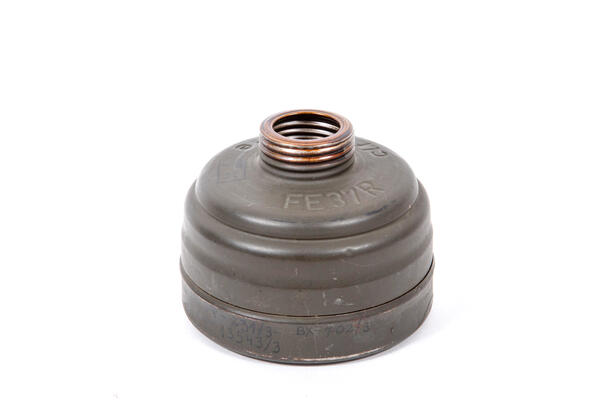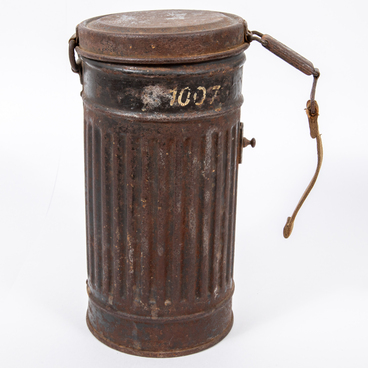Germany became the first country to mass use chemical warfare during military operations. During the First World War, on April 22, 1915, the German army released 168 tons of chlorine gas on the positions of French troops near Belgian Ypres. The Germans also were affected by the deadly gas and were unable to take an advantage of the attack.
Many countries sought to find an effective means of protection from this new type of weapons of mass destruction, including Russia. Multilayer gauze bandages soaked in different solutions did not help in cases of prolonged contact with chlorine, phosgene, or mustard gas.
In 1915, chemist Nikolay Zelinsky synthesized activated charcoal and proved its ability to absorb toxic gases. In November of the same year, engineer Edmond Kummant, a technologist at the ‘Triangle’ factory, presented a special rubber helmet with glasses that protected not only the eyes and respiratory organs but also the head. In Russia, the first batch of coal gas masks was released in 1916 after field tests.
England and Germany launched the new invention of the Russian scientists into production earlier and then they modified the filter by adding chemical absorbers to it — for example, soda lime. In 1915, Germany was the first to provide its soldiers with personal chemical protection equipment.
During the Second World War, Wehrmacht used three models of gas masks: Gasmaske 24, 30, and 38. The gas masks of the 1930 and 1938 models had a similar design: a round filter that was screwed onto the muzzle of the protective mask.
A cylindrical filter box from a gas mask of the 1930 model is housed in the Noyabrsk Museum Resource Center. It is made of metal and painted in a khaki color. The upper part of the box has a thread which is attached to the mask. Inside, there is a filter consisting of alternating layers of filtering, the thickness and the structure of which varied depending on the model. For example, the FE 37 filter had three layers: a fabric soaked in solutions that protects against gases, activated charcoal, and a woven lining that trapped leaked dangerous particles.
Many countries sought to find an effective means of protection from this new type of weapons of mass destruction, including Russia. Multilayer gauze bandages soaked in different solutions did not help in cases of prolonged contact with chlorine, phosgene, or mustard gas.
In 1915, chemist Nikolay Zelinsky synthesized activated charcoal and proved its ability to absorb toxic gases. In November of the same year, engineer Edmond Kummant, a technologist at the ‘Triangle’ factory, presented a special rubber helmet with glasses that protected not only the eyes and respiratory organs but also the head. In Russia, the first batch of coal gas masks was released in 1916 after field tests.
England and Germany launched the new invention of the Russian scientists into production earlier and then they modified the filter by adding chemical absorbers to it — for example, soda lime. In 1915, Germany was the first to provide its soldiers with personal chemical protection equipment.
During the Second World War, Wehrmacht used three models of gas masks: Gasmaske 24, 30, and 38. The gas masks of the 1930 and 1938 models had a similar design: a round filter that was screwed onto the muzzle of the protective mask.
A cylindrical filter box from a gas mask of the 1930 model is housed in the Noyabrsk Museum Resource Center. It is made of metal and painted in a khaki color. The upper part of the box has a thread which is attached to the mask. Inside, there is a filter consisting of alternating layers of filtering, the thickness and the structure of which varied depending on the model. For example, the FE 37 filter had three layers: a fabric soaked in solutions that protects against gases, activated charcoal, and a woven lining that trapped leaked dangerous particles.
The Nazi symbols visible on the exhibit do not seek to promote any ideologies, but reflect the military history of the first half of the 20th century.



